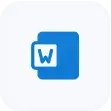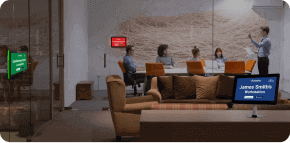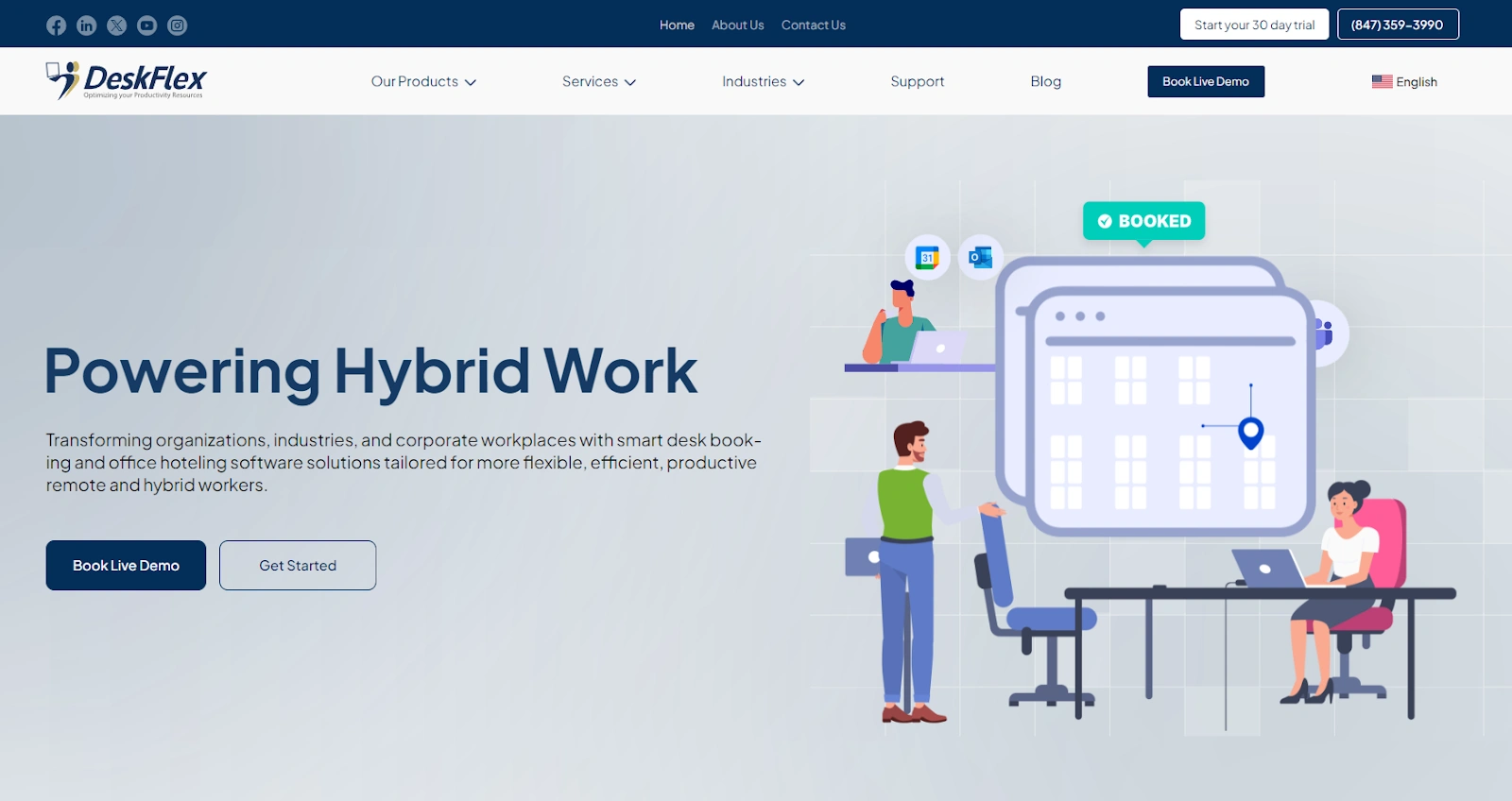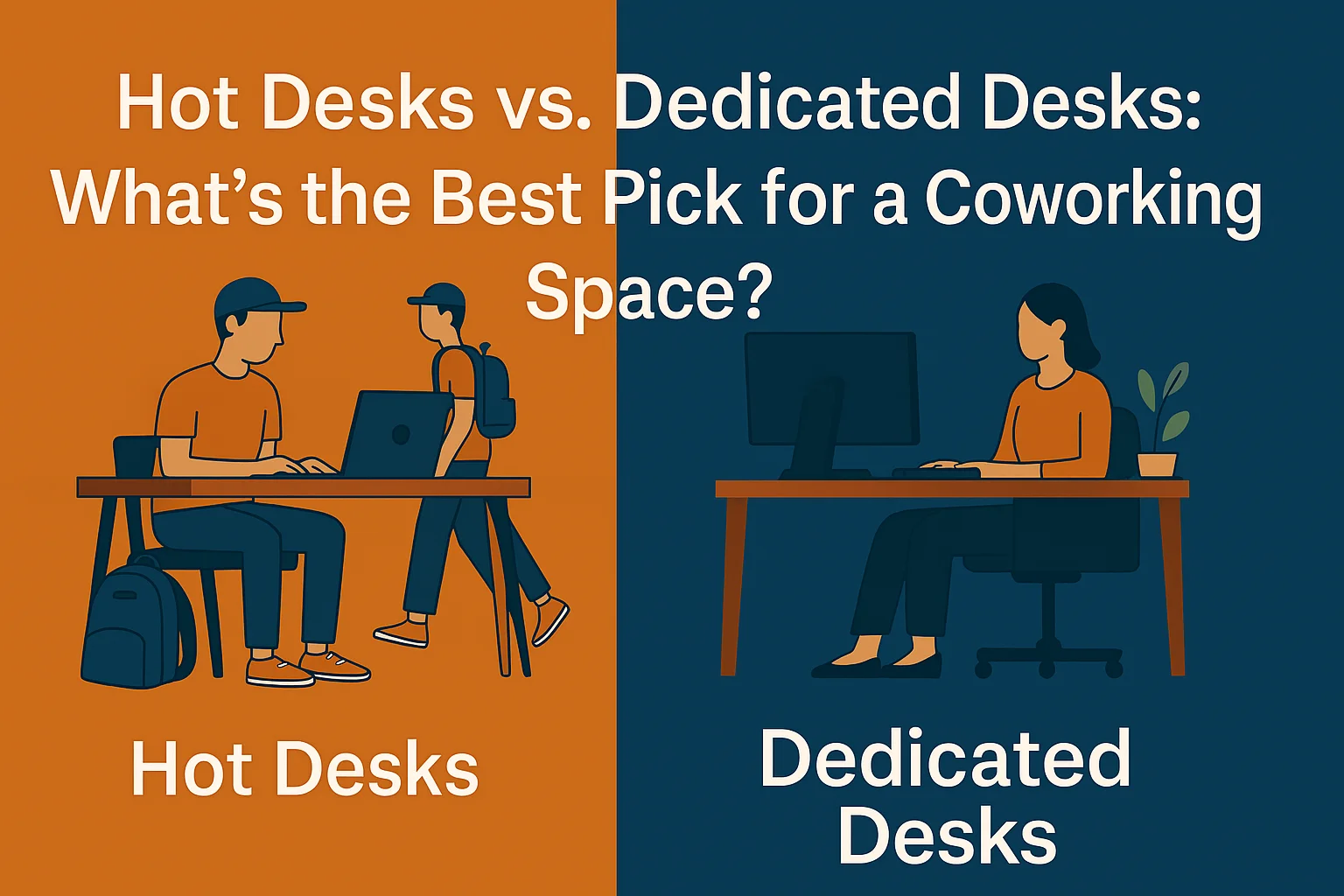
Business Digitalization for Workplaces: Future of Work
Managing a business isn’t without its headaches, especially when communication breaks down, or workflows get clunky.
You’ve probably felt the pain of juggling scattered tools, dealing with inefficient processes, or trying to keep remote teams on the same page. It can slow everything down and leave your team feeling disconnected.
The good news? Shifting to a digital workplace can make a world of difference. By bringing everything together—tools, communication, and collaboration—you can tackle these issues head-on and keep your business running smoothly.
Let’s take a look at how a digital workplace can help solve these everyday challenges and get your team working better together.
What is a Digital Workplace?
A digital workplace is exactly what it sounds like—your office, but online. It’s where your team logs in to collaborate, share files, chat, and get things done, no matter where they’re working from.
It’s a virtual hub where all the tools and resources you need to work are in one place. Instead of physically being at your desk in the office, you’re using digital tools like Slack, Zoom, or Google Drive to handle tasks, talk to coworkers, and manage projects.
At its core, a digital workplace is about making work more flexible and efficient. Whether your team is scattered across different time zones or working from home, it helps keep everyone connected and on the same page.
The Rise of Digital Workplaces
Digital workplaces have become more than just a nice-to-have—they’re now essential. So, why is everyone talking about them?
It all comes down to the way work has changed in recent years. Businesses are no longer tied to one physical office space, and neither are their employees. Remote work is booming, and the traditional 9-to-5 in a single office just doesn’t fit as well as it used to.
The big push for digital workplaces really took off with the rise of remote work. Businesses needed a way to stay connected and keep things running smoothly, and tools like Slack, Zoom, and cloud storage solutions stepped in to help teams collaborate from anywhere.
Another reason for the rise is that businesses started noticing the employee productivity boost. With digital tools in place, employees could communicate more easily, share documents instantly, and track progress in real time.
No more waiting for long email chains or missing out on important updates because someone was out of the office. A digital workplace gives employees the freedom to work how and where they want without losing touch with the team.
The rise of digital workplaces is also a response to the need for more flexibility. Employees expect a work environment that adapts to their needs, and businesses are seeing the value in offering that flexibility. It’s not just a temporary solution—it’s a shift in how work gets done for the long haul.
What Makes a Digital Workplace?
All that said, how can you build your own digital workplace platform? Before anything else, let’s talk about the core components of an effective digital workplace:
Digital Communication Tools
Communication is the heart of any workplace, and digital tools like Slack, Microsoft Teams, and Zoom help keep conversations flowing. These platforms allow employees to chat, share ideas, and hold virtual meetings, making sure everyone stays in the loop, no matter where they are.
Collaboration Platforms
Collaboration tools allow employees to work together, even when your team isn’t physically together. Platforms like Google Workspace, Trello, and Monday let teams share documents, track progress, and collaborate in real time.
Cloud Storage
Cloud storage is where all your important files live. Tools like Google Drive, Dropbox, or OneDrive let employees store, share, and access documents from anywhere. No more emailing files back and forth or dealing with version confusion—cloud storage keeps everything in one secure, easily accessible place.
Security Measures
A digital work environment demands tight security measures. Tools like password managers, VPNs, and multi-factor authentication help make sure that only the right people can access sensitive information.
Keeping data secure is a must, especially when you’re relying on digital tools to manage day-to-day operations.
Employee Engagement
Keeping your team motivated and connected is easier with the right employee engagement tools. Platforms like Bonusly and 15Five help you recognize and reward employees for their achievements, which keeps morale high and makes people feel appreciated.
Tools like Officevibe and TINYpulse encourage employee feedback via surveys, polls, and even contests so employees can share their opinions and feel more involved in what’s happening at work.
Plus, having a simple employee directory makes it incredibly easy for team members to find each other by name, department, or location, encouraging better collaboration across the board.
Intranet Systems
An intranet system is like your company’s online home base, where employees can easily find important updates, announcements, and resources. It helps keep everyone connected, whether they’re in the office or working remotely.
Instead of digging through endless emails or searching across different platforms, your team can quickly access company news, policies, and key info in one place.
Knowledge Management
Knowledge management platforms make sharing and finding information simple. Tools like Confluence and Notion let your team store everything from training materials to project guidelines in one easy-to-access spot.
Instead of chasing down answers or asking around, employees can quickly find what they need and get on with their day.
It’s a great way to improve productivity and foster a collaborative environment where sharing knowledge is second nature. Plus, it keeps everyone on the same page, which is a huge win for team efficiency.
Employee Onboarding
Employee onboarding is all about making new hires feel welcome and helping them get up to speed quickly. A smooth onboarding process can make a huge difference in how new employees settle in and start contributing.
With the right tools, you can make it easy for them to access everything they need, from training materials to company policies, all in one place.
Platforms like BambooHR and WorkBright let new hires complete tasks like paperwork, training modules, and onboarding checklists online at their own pace. This way, they’re not overwhelmed on day one and can gradually get comfortable.
Office Space Management
Managing your office space effectively is another important part of a digital workplace, especially with the rise of hybrid work environments.
Tools like DeskFlex allow employees to easily book desks, meeting rooms, and other resources, so you can make the most out of your office without overcrowding or wasting space. With real-time data, you can track how your office is being used and make adjustments as needed.
This helps businesses balance in-office and remote work to keep things organized and flexible for everyone.
Why Your Business Needs a Digital Transformation
If you haven’t already embraced digital transformation, your business might be missing out on some big advantages. Here are some of the most important ones:
1. Maximizing Productivity
Digital transformation is a real game-changer when it comes to getting things done. By bringing in the right digital tools, your team can collaborate more smoothly, manage tasks with ease, and ditch those outdated, time-wasting business processes.
Whether it’s using project management platforms or better communication apps, these tools help your team stay focused and on track. The result? Faster work, fewer delays, and a big boost in overall productivity.
2. Improving Flexibility
One of the biggest perks of going digital is the flexibility it brings. A digital workplace lets your employees work from anywhere, and with remote work becoming the norm for many, having tools that keep everyone connected is key.
Plus, flexibility can help improve work-life balance and, consequently, employee satisfaction. If your business needs it, you’ll also be able to hire talent from all across the country (or even the world!)
3. Upgrading Collaboration
Digital tools make teamwork easier, plain and simple. With platforms like Slack, Google Drive, or Asana, your team can collaborate in real time, even if they’re working from different places.
No more waiting around for email responses or struggling with version control on shared documents. These tools help your team stay connected, brainstorm together, and keep projects moving forward without the usual hiccups.
4. Future-Proofing Your Business
Going digital isn’t just about keeping up today, it also helps you get ready for tomorrow. Technology keeps changing, and businesses that are set up digitally can adapt more easily to whatever comes next.
Whether it’s new trends, customer needs, or unexpected challenges, having the right digital systems in place means your business can roll with the punches and stay ahead of the curve.
5. Cost Savings
One of the best perks of switching to a digital workplace? The cost savings. With fewer people needing to be in the office, you can cut down on expenses like rent, utilities, and office supplies.
Plus, you’ll save on things like paper, printing, and other old-school costs that come with traditional offices.
Digital tools also make your processes more efficient, meaning less time (and money) spent on manual work. In the long run, these savings can really add up and give you extra funds to invest back into your business.
How to Shift From Traditional Office to Digital Workplace
Making the jump from a traditional office setup to a digital or hybrid workplace can seem like a big leap, but with the right approach, it’s totally doable. Here’s how you can make the transition smooth and stress-free for your team.
1. Take a Look at What’s Working (and What’s Not)
Before you introduce new tools, step back and assess your current workflow. What processes are slowing you down? Where could you be more efficient?
Whether it’s communication, project tracking, or file management, understanding where you’re facing challenges will help you figure out which digital workplace tools can fix the problem.
2. Pick the Right Tools for the Job
The secret to a successful digital workplace? Using the right tools. For communication, you’ve got options like Slack or Microsoft Teams.
If staying on top of tasks is your goal, check out project management tools like Trello or Asana. And don’t forget cloud storage options like Google Drive or Dropbox to keep files easy to access. You don’t need every tool out there—just choose the ones that solve your team’s needs.
Also, you probably already have a majority of these tools set up in a traditional workplace. So, when you transition to a hybrid or fully remote workplace, you just need to optimize your workflows to fit your new business needs.
3. Get Everyone Up to Speed
Introducing new tools means helping your team get comfortable with them. While some employees might dive right in, others may need a little guidance.
Host training sessions, share tutorials, and let people ask questions. The more support you give upfront, the smoother the transition will be. Remember, it’s all about making the shift feel easy, not overwhelming.
4. Don’t Rush It—Take Your Time
You don’t need to flip the switch overnight. Start small by rolling out a few tools and see how your team adapts. Gradually add more as needed. You can also start offering a work-from-home option a few days out of the week to start and see how your employees adapt to the new set-up.
This way, people can get used to the changes without feeling bombarded. Plus, you can troubleshoot any hiccups along the way and adjust your approach if necessary.
5. Set Up Some Ground Rules
Having a clear strategy is a must for making the digital workplace work. Set some guidelines on how to communicate, share files, and track projects. Digital workflows are not that different from a fully in-office work setup, but the small changes definitely need addressing.
Make sure everyone knows what’s expected, especially when it comes to remote work. A clear plan helps keep everything running smoothly and ensures no one is left guessing how things should work.
6. Keep Communication Open
As you shift to a digital workplace, make sure you’re checking in with your team regularly. Ask how things are going, what’s working, and where they’re hitting roadblocks. This feedback will help you fine-tune the transition and make adjustments that work for everyone.
Remember: Open communication keeps things transparent and helps avoid frustrations down the road.
7. Stay Secure
When you go fully or partially digital, keeping your data safe is of utmost importance. Use secure tools, like password managers and multi-factor authentication, to protect sensitive information.
Don’t forget to educate your team on security best practices, so everyone is doing their part to keep things safe.
8. Embrace the Flexibility
One of the best things about a digital workplace is the flexibility it brings. Let your team work from wherever they’re most productive, whether that’s from home, a coffee shop, or even the office. Offering flexibility with hours and locations can do wonders for employee morale and productivity.
Plus, it helps create a healthy work-life balance, which benefits everyone.
How DeskFlex Can Help Perfect Your Digital Workplace Strategy
DeskFlex is the perfect solution for making your digital workplace run smoothly, especially if your team is navigating a hybrid or flexible work environment. Let’s break down how DeskFlex can help:
- Simple desk booking: DeskFlex makes it easy for employees to reserve a desk or workstation when they need it. No more scrambling to find a spot in the office. Employees can check availability and book a desk ahead of time, making sure they have a place to work when they come in.
- Room and resource scheduling: Need a meeting room or special equipment? DeskFlex has you covered. It lets employees book conference rooms or other office resources just as easily as desks. This keeps everything organized and prevents double booking or fighting over spaces.
- Hybrid work management: For businesses juggling both in-office and remote work, DeskFlex makes managing it all a breeze. It helps you balance office attendance, track who’s coming in, and even manage hot-desking policies. You’ll know exactly how your office space is being used and can adjust it based on real-time data.
Ready to optimize your workspace and improve flexibility? Book a live demo today!
FAQs About Digital Workplaces
What’s a digital workplace?
A digital workplace solution is basically your office online. It’s where employees use tools like Slack, Zoom, and project management apps to collaborate, communicate, and get their work done—no matter where they are.
How will a digital workplace enhance my business?
A digital workplace boosts productivity, keeps communication flowing, and lets your team work from anywhere. It makes tasks easier, saves time, and helps everyone stay connected in the office or remotely.
What tools do I need for a digital workplace?
You’ll need some key tools: communication platforms like Slack or Microsoft Teams, project management software like Trello or Asana, cloud storage like Google Drive or Dropbox, and solid security measures to keep your data safe.
Is a digital workplace secure?
It can be if you’ve got the right security in place. Using things like multi-factor authentication and encryption, along with training your team on best security practices, will keep your digital workplace secure. This is especially important with the increasing rate of employee data breaches worldwide.
What are common digital workplace challenges?
Common digital workplace challenges include communication breakdowns, difficulty adapting to new tools, managing security risks, and maintaining employee engagement in remote settings. Additionally, ensuring smooth collaboration across time zones and keeping data secure are ongoing concerns for many businesses.
















































 Support
Support  Demo
Demo  Blog
Blog 






